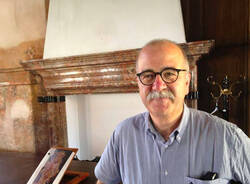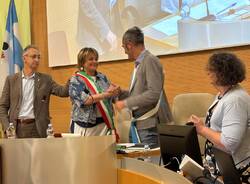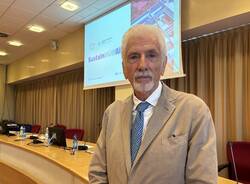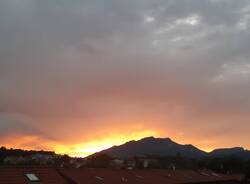The “Varesine”, the trains typical of the Milan-Varese-Porto Ceresio line, are being revived
In 1902, this was the first electric railway in Italy; it was a luxury for the line that brought the Milanese people to their holiday resorts. Today, the FS Foundation has announced it is going to restore a powered carriage.
The FS Foundation, which works to exploit the FS Group’s historic heritage, announced today its intention to restore a 1930’s E623 powered carriage. These very special carriages were nicknamed the “Varesine”, because they once ran exclusively on the FS Milan Porta Nuova-Gallarate-Varese-Porto Ceresio line, which was an unusual line because the trains got their electricity from a third, 650 V electrified rail.
“The splendid, first class E623, which characterised railway transport in the first half of the 1900s, particularly in Lombardy, will be completely restored,” the FS Foundation explained in a post, “and, together with the already preserved 623.612 and 623.629, and the 623.327 towed carriage, they will go back into service, with a solid and homogeneous composition of these electric locomotives.” (The photo at the top of the article shows one of the carriages already restored)
These powered carriages date back to 1932; built entirely in Milan, they could reach speeds of up to 110 km/h while also pulling other carriages. Even though they had several dozen seats on board, they could pull a number of carriages. They were solely devoted to one line, the Milan-Varese-Porto Ceresio, the first electrified line in Italy, since 1902; on the first section, from Milan, through Busto Arsizio and Legnano, to Gallarate, they carried mainly workers who were going to the factories and workshops. Then, on the section after Gallarate, they also carried (in the first-class compartments, with their velvet seats) the “gentlefolk” travelling from Milan to Varese, but also Gazzada, Induno Olona and Porto Ceresio, all tourist and holiday destinations, as evidenced by the numerous 19th and 20th century houses, not far from the stations.
The 650 Volt third rail system was used only on two lines, the Milan-Porto Ceresio, and the tunnel in the centre of Naples; in Milan, the trains departed from the station of Porta Nuova, which is the last remnant of the old Central Station popularly known as “le Varesine” (for a long time, the name was associated with the area, where the famous amusement park was built).
However, the third electrified rail was dangerous, and in 1949, the State Railway Company (FS) decided to standardise the Milan-Porto Ceresio line with all of the other lines, which operated with a 3000 Volt current passing through cables above the tracks; the powered carriages were partly adapted in the FS workshops, situated in Via Pacinotti, in Gallarate, which already took care of the normal maintenance. And so, the powered carriages of the 1930s (which, at the beginning, were still, in some way, “luxury” trains) became humble commuter trains, and were used until the beginning of the 1980s.
This is the powered carriage that is going to be restored; it was the property of the company Trasporto Ferroviario Toscano, which operates two lines in Tuscany, near Arezzo.
Today these powered carriages can be used as historic trains; they have the charm of the velvet and wooden seats, and the brass plates, but they cost less than a steam train, which is certainly more spectacular, but more expensive for those who want to organise a historic train, for tourism or events. The FS Foundation works to protect the technical-scientific and human heritage of FS history; it is a value in itself (for example, for any museum or cultural institution), but it also generates value locally, because it helps to exploit secondary lines and “out of town” destinations. Recently, for example, the FS Foundation organised several train journeys to Lake Maggiore.
The director of the FS Foundation, Luigi Cantamessa, tells the story of the “Varesine”, using pictures of the powered carriage kept at the National Railway Museum, in Pietrarsa, near Naples.
Translated by Edoardo Graziani and Denise Mura
Reviewed by Prof. Rolf Cook
La community di VareseNews
Loro ne fanno già parte
Ultimi commenti
Stefano Montani su Contro l’indifferenza e la violenza: la musica scuote Varese in un grido per la Palestina
Felice su Sanpietrini staccati e resti di gavettoni: allarme maleducazione al Parco Mantegazza di Varese
Mastro SIM su Patentino obbligatorio per alcuni cani: la Lombardia vara la “save list”, ecco le razze coinvolte
Gloria Cerri su Patentino obbligatorio per alcuni cani: la Lombardia vara la “save list”, ecco le razze coinvolte
CarloP su Sanpietrini staccati e resti di gavettoni: allarme maleducazione al Parco Mantegazza di Varese
GrandeFratello su Sanpietrini staccati e resti di gavettoni: allarme maleducazione al Parco Mantegazza di Varese
















Accedi o registrati per commentare questo articolo.
L'email è richiesta ma non verrà mostrata ai visitatori. Il contenuto di questo commento esprime il pensiero dell'autore e non rappresenta la linea editoriale di VareseNews.it, che rimane autonoma e indipendente. I messaggi inclusi nei commenti non sono testi giornalistici, ma post inviati dai singoli lettori che possono essere automaticamente pubblicati senza filtro preventivo. I commenti che includano uno o più link a siti esterni verranno rimossi in automatico dal sistema.